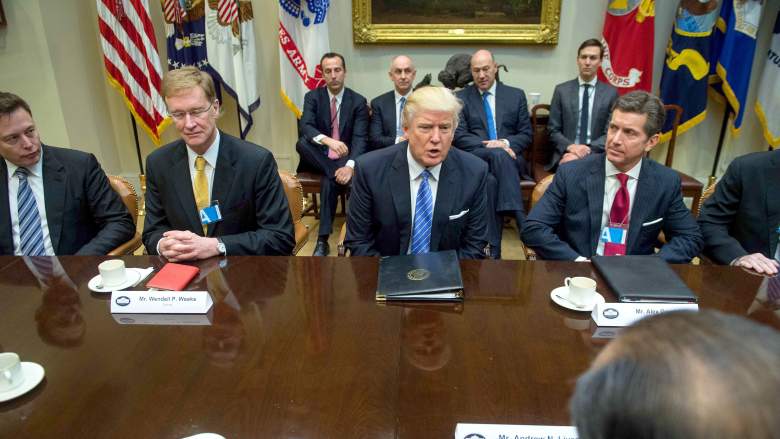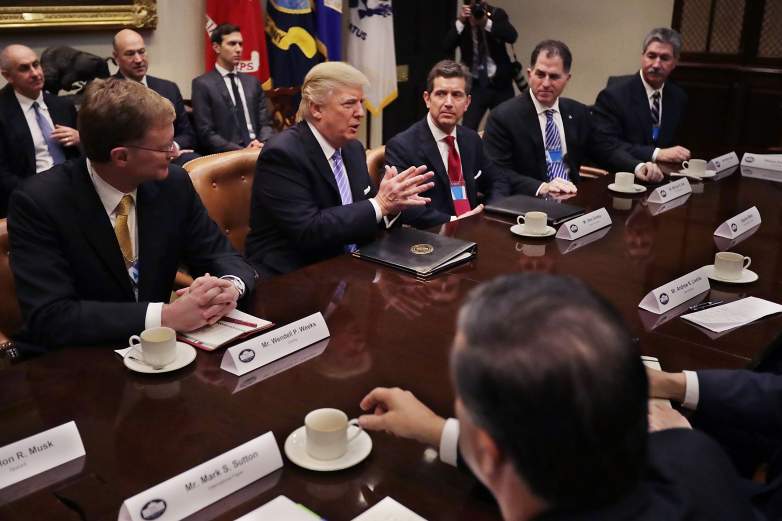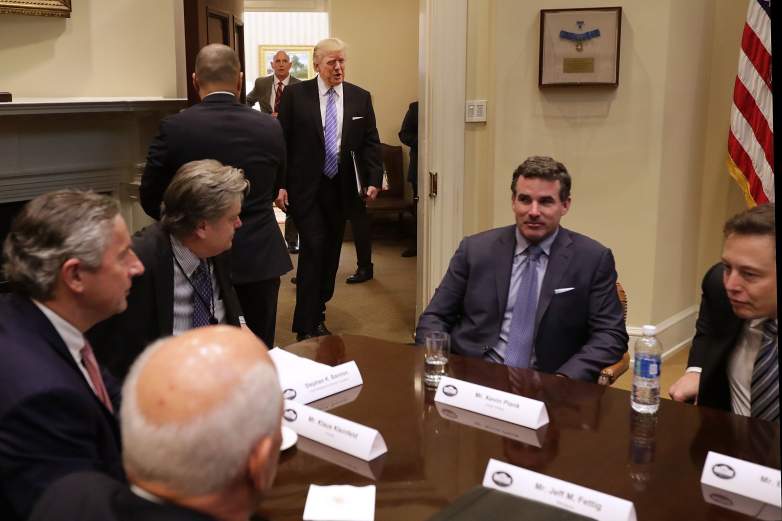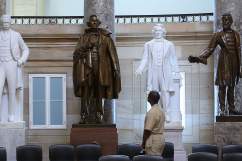
Fed up with controversial comments made by President Donald Trump, multiple executives at some of the top businesses in America abruptly quit the White House Manufacturing Council, which ultimately led to its end.
The resignations became rampant after Trump’s latest comments regarding white supremacy in the U.S. He was commenting on who was to blame for the intense violence in Charlottesville, Virginia, where hundreds of white nationalists protested the potential removal of a Confederate statue in a public park.
The demonstrations turned violent and deadly, with a 32-year-old woman being killed after a man drove a vehicle into a group of counter protesters.
Trump said “both sides” were to blame for the chaos that took place.
“You had a group on one side that was bad and you had a group on the other side that was also very violent, and nobody wants to say it, but I’ll say it right now,” Trump told reporters. “You had a group on the other side that came charging in without a permit and they were very, very violent.”
The initial statement caused many members of Trump’s manufacturing council, which promoted discussion about how to curb the shortage of skilled-trade workers in the country, to announce they were severing their ties with it.
Eventually, after over one-third of the council members announced their intentions to quit, Trump announced on Twitter he was abruptly ending the group.
The business leaders that were part of the council released a joint statement following the news that it had been disbanded. It said “intolerance, racism and violence have absolutely no place in this country and are an affront to core American values.”
Here’s what you need to know about the coucil:
1. Trump Announced the Formation of the Council a Week Into His Presidency

President Donald Trump delivers opening remarks during a meeting with (L-R) Wendell Weeks of Corning, Alex Gorsky of Johnson & Johnson, Michael Dell of Dell Technologies, Mario Longhi of US Steel, and other business leaders and administration staff in the Roosevelt Room at the White House January 23.
The Trump administration announced January 27 that it was launching the council to assist in Trump’s job creation agenda.
“The President will be meeting with some of the world’s most successful and creative business leaders to share their experiences and gain their insights,” a White House press release said. “President Trump plans to continually seek information and perspectives from a diverse range of business leaders, including those listed below and others, on how best to promote job growth and get Americans back to work again.”
Trump has continuously touted the success of his job creation policies, which he’s said has helped create 1 million jobs during his first six month as president.
2. Two Members Stepped Down in May, & Elon Musk Said He Quit in June
The initial makeup of the council included dozens of the nation’s top business leaders, but that list has since dwindled down. Eight of those on the council said they would be leaving.
It started back in May, when Mark Fields, the former CEO of Ford, and Mario Longhi, the former CEO of U.S. Steel, stepped down after they were no longer the CEOs of their respective companies.
The in June, entrepreneur and Tesla and SpaceX CEO Elon Musk announced he would stick to his vow of withdrawing from the council after Trump announced the U.S. would depart the historic Paris climate agreement.
“Am departing presidential councils,” Musk tweeted. “Climate change is real. Leaving Paris is not god for America or the world.”
Musk had been seen meeting with the then president-elect at Trump Tower during his transition period.
3. After the Charlottesville Violence, 6 CEOs Said They Quit

President Donald Trump walks into the Roosevelt Room for a meeting with Mark Sutton of International Paper, Jeff Fettig of Whirlpool, White House Senior Counselor Steve Bannon, Kevin Plank of Under Armour, Elon Musk of SpaceX and other other business leaders at the White House January 23.
Then, the violence in Charlottesville spurred by white supremacy took place, and five more council members announced their intentions to leave because of the way Trump treated the situaion.
First, there was Merck Pharmaceuticals CEO Ken Frazier, who announced he withdrew from the council because Trump’s comments didn’t go far enough.
“America’s leaders must honor our fundamental values by clearly rejecting expressions of hatred, bigotry and group supremacy,” Merck said in a statement.
Trump responded to Frazier’s exit by sending tweets criticizing his company.
After Frazier’s resignation, other executives followed, as Intel’s Brian Krzanich, Under Armour’s Kevin Plank, Alliance for American Manufacturing’s Scott Paul and AFL-CIO’s Richard Trumka and Thea Lee all saying they, too, were leaving due to his take on the Charlottesville incident.
Most recently, 3M’s Inge Thulin and Campbell Soup’s Denise Morrison said they would no longer be a part of the council.
Thulin said his reason for doing so is because “diversity and inclusion” are considered his personal values and are “fundamental” to his company.
Morrison released a statement that said similar things, adding that “racism and murder are unequivocally reprehensible and are not morally equivalent to anything else that happened in Charlottesville.”
The exits of the other executives left a few more that still sit on the council. According to CNN Money, that list includes: GE’s Jeff Immelt, Dow Chemical’s Andrew Liveris, Nucor’s John Ferriola, Whirlpool’s Jeff Fettig, International Paper’s Mark Sutton, Dell’s Michael Dell, Boeing’s Dennis Muilenburg and Newll Brands’ Michael Polk.
There were eight other executives who didn’t commented on the matter or didn’t get back to CNN Money on the inquiry. The are Lockheed Martin’s Marilynn Hewson, Harris Corporation’s Bill Brown, Johnson & Johnson’s Alex Gorsky, United Technologies’ Greg Hayes, Dana’ Jim Kamsickas, Timken’s Rich Kyle, and Corning’s Wendell Weeks.
But their place on the council was terminated when Trump made the announcement he was ending the council August 16.
4. Dow Chemical’s Andrew Liveris Led the Council
In December 2016, Trump announced that the council would be led by Dow Chemical CEO Andrew Liveris, who met with the president on stage during a stop in Michigan on the newly-elected president’s “Thank You Tour.”
Liveris is a Greek-Australian and became CEO of the company in 2004. Two years later, he was elected chairman of the board at the company and was also appointed co-chair of President Barack Obama‘s Advanced Manufacturing Partnership.
Liveris earned his bachelor’s degree in chemical engineering from the University of Queensland in Brisbane and was awarded a university medal.
5. The Leaders Joined Trump For a White House Meeting in March
Many of the executives named to the council, including Plank and Musk, met with Trump just three days into his presidency. The meeting was a listening session by the president on issues effecting each company’s industry.
Trump said after the meeting that his policies would cut regulations to businesses by 75 percent in order to encourage businesses to continue manufacturing in the U.S.








